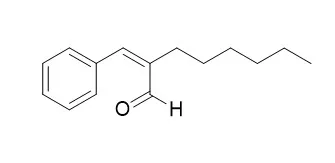| Animal Research: |
| Toxicological ences, 2002(2):420-428. | | Use of a B cell marker (B220) to discriminate between allergens and irritants in the local lymph node assay.[Pubmed: 12151637] | It has been shown that exposure of mice to contact allergens induces B cell activation in the draining lymph nodes (DLN), as seen by an increase in the percentage of B220+ or IgG/IgM+ cells.
METHODS AND RESULTS:
We have now examined whether the measurement of the percentage of B220+ cells could be used as an alternative or supplementary endpoint for the local lymph node assay (LLNA) to differentiate between allergenic responses and those few irritants that induce low-level proliferation in the DLN. Mice were treated on the ears, daily for 3 consecutive days, with various allergens (1-chloro-2,4-dinitrobenzene, alpha-Hexylcinnamaldehyde, trinitrochlorobenzene, isoeugenol, and eugenol) or irritants (benzalkonium chloride, methyl salicylate, salicylic acid, and sodium lauryl sulfate). The DLN were excised 72 h following the final topical treatment, and the cells were prepared for B220 analysis using flow cytometry. The percentage of B220+ cells in lymph nodes derived from test and vehicle-treated animals was determined for 5 allergens and 4 irritants tested in multiple experiments (n = 3 to 17). As expected, the percentage of B220+ B cells was increased with each of the allergens tested, whereas irritant treatment did not cause similar increases. Moreover, the method was reproducible. For example, the strong allergen, 1-chloro-2,4-dinitrobenzene and the weak allergen, alpha-Hexylcinnamaldehyde were identified as allergens in 17 of 17 and in 12 of 13 experiments, respectively. The percentage of B220 values for each chemical treatment (41 observations for allergens; 28 observations for irritants) versus the percentage of B220 values for the concurrent vehicle controls were plotted, and a classification tree model was developed that defined a B220 test:vehicle ratio cutoff of 1.25 for discriminating between allergens (>1.25) and irritants (<1.25). Using this B220 test:vehicle ratio of 1.25 in 93% of the 69 independent observations made, the allergens and irritants tested were identified correctly. Finally, to evaluate the performance of this model in a second independent laboratory, 3 allergens and 2 irritants were tested. Each of the allergens and irritants were classified correctly using the B220 test:vehicle ratio cutoff of 1.25.
CONCLUSIONS:
These data demonstrate that analysis of B220 expression in DLN may be useful in differentiating between allergen and irritant responses induced in chemically treated mice. |
|






 Cell. 2018 Jan 11;172(1-2):249-261.e12. doi: 10.1016/j.cell.2017.12.019.IF=36.216(2019)
Cell. 2018 Jan 11;172(1-2):249-261.e12. doi: 10.1016/j.cell.2017.12.019.IF=36.216(2019) Cell Metab. 2020 Mar 3;31(3):534-548.e5. doi: 10.1016/j.cmet.2020.01.002.IF=22.415(2019)
Cell Metab. 2020 Mar 3;31(3):534-548.e5. doi: 10.1016/j.cmet.2020.01.002.IF=22.415(2019) Mol Cell. 2017 Nov 16;68(4):673-685.e6. doi: 10.1016/j.molcel.2017.10.022.IF=14.548(2019)
Mol Cell. 2017 Nov 16;68(4):673-685.e6. doi: 10.1016/j.molcel.2017.10.022.IF=14.548(2019)